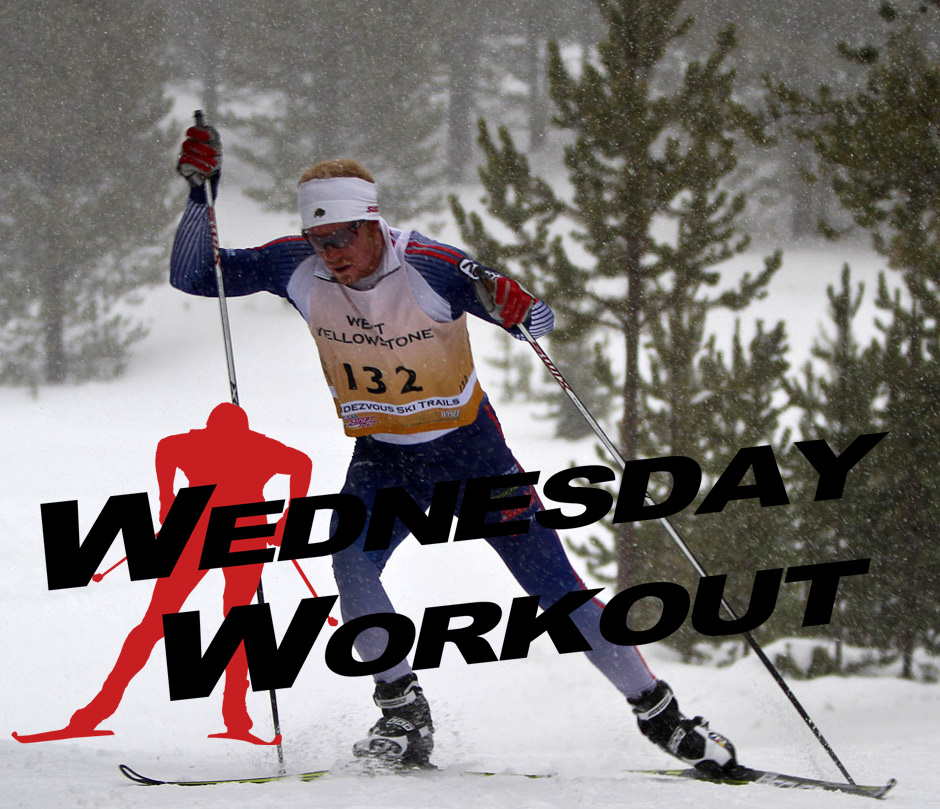
This week, we bring back a Pro Workout from three years ago, in which Matt Gelso of the Sun Valley Ski Education Foundation Gold Team shared his pre-race routine. Last weekend, Gelso busted onto the SuperTour scene with a nearly 10-second win in the first distance race of the season. For his original pro workout, published Dec. 14, 2011, click here.
***
When race morning rolls around, it is important to know what you need to do in order to maximize your effort on the race course. For some, that means superstitious traditions, like always wearing a certain pair of socks (or even mismatched socks). For others it means eating exactly two bowls of oatmeal and finishing breakfast precisely two hours before their start time. Regardless of your pre-race routine, it is imperative that a solid, active warm-up is achieved to be sure your body is primed for the strain of a hard race.

Everyone is different, especially when it comes to a sport like nordic ski racing. There are many different perspectives about every detail regarding training or racing. I require a longer and very substantial warm-up, some simply need a few minutes to move around. It is important that you find your own unique methods and progression that gets you perfectly warmed up before a race. My process begins with some easy, level one skiing, followed by a moderate intensity portion, and finishing with some short speeds and a little more easy skiing.
To begin my warm-up, I ski easy level 1 for 15-25 minutes. This is easy skiing to get blood flowing through the body and get the muscles moving easily. This is also a good time to get yourself fully focused on the business of the day. Once I am moving well I will stop for a couple minutes and have a sip of water and stretch a little to continue working out any last bits of stiffness.
Intensity is the next portion of the warm-up and is very crucial and will be different for everyone. It is important to get your heart rate out of the easy level one zones to make sure your body is ready to respond to hard stimulus. It is imperative to make sure you progress into the intensity properly, touching all your training zones on the way up the intensity latter. After I finish the easy skiing segment I find some rolling or hilly terrain and start my intensity ladder. I begin with four minutes of level 2 skiing, followed by two minutes rest. Next is four minutes of level 3 skiing, again followed by 2 minutes rest. Lastly, I ski two minutes of level 4 or full on ‘race pace’, followed by two minutes rest.
This intensity progression provides time for the body to progress through every levels to fully warm up all the systems. It is crucial to work through all these levels to fully warm your body in a controlled manner, and not make huge jumps in levels and build large amounts of lactate.
Gelso’s Warmup Routine (circa 2011):
- Level 1 for 15 – 25 minutes
- Level 2 for 4 minutes (2 min rest)
- Level 3 for 4 minutes (2 min rest)
- Level 4 for 2 minutes (2 min rest)
- Warm-down for 10-20 minutes (with 3-5 speeds for 10-15 seconds each)
- Leave 15-20 before race start for last-minute prep
Please note that the exact time guidelines I use here for intensity on-time length are not set in stone—I vary the on-time length of each interval depending on how I am feeling, whether or not I raced the day before, when I did my last intensity, and the length of the race. Each day is a different situation, so use circumstance (to a reasonable extent) to dictate what needs to be done.
Once the intensity portion is complete I ‘warm-down’ for 10-20 minutes. This easy skiing after the intensity is to be sure that any lactate that was produced is removed before you being your race. During this easy skiing, I will do three to five accelerations or speeds above race pace. These will be 10-15 seconds. These speeds will help better clear any residual lactate produced during the intensity portion of the warm-up, as well get your muscles up to speed for a race effort.
Once the warm-up is complete it is important to stay warm before your start and not let your muscles cool down too much. I like to end my warm-up 15-20 minutes before my race start to make certain I have time to get skis and everything else ready to race, but not too much time to let my body cool down.
My specific race warm-up works well for me and gets me ready to provide a solid effort on the race course. This exact warm-up is not meant for everyone and even I change and adapt it to fit my time, ski, resources, and space/snow constraints. The most important aspect of the warm-up is making sure it gets your body ready to throw down a hard effort on the race course. It should be efficient, fairly consistent each time (at its base level), not resource consuming, and most importantly, adaptable to the plethora of changing conditions and constraints that race day tends to provide.
A solid warm-up will give you the best chance of skiing your way up onto the podium—or maybe just off it in 4th, like I have been every distance race this year.



